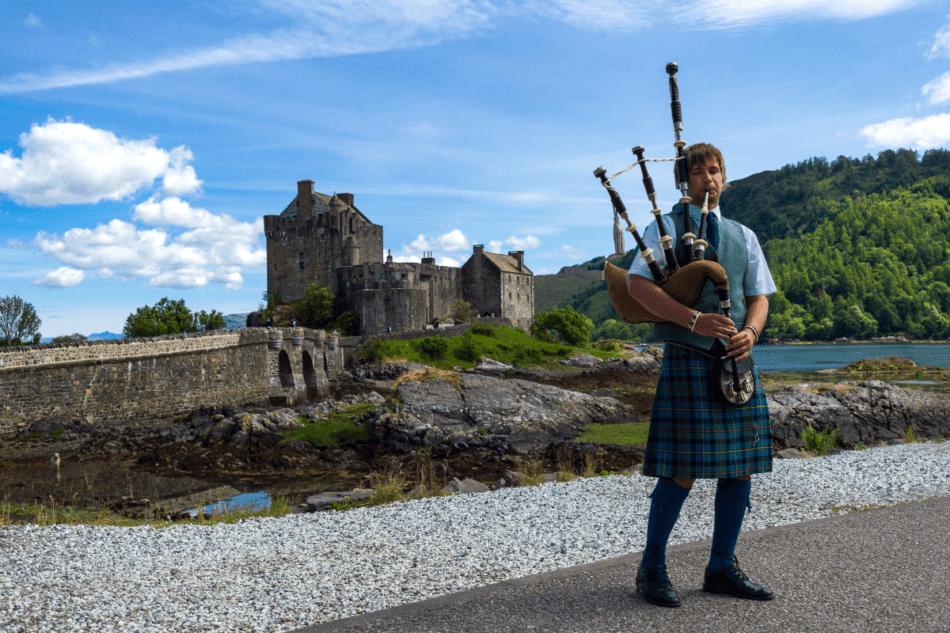Mythologies and folklores consume Scotland in antiquity and magnificence. Castles, lochs, unicorns, whiskey, haggis, bagpipes, islands, and a hiker’s paradise!
Content
- Districts and Weather of Scotland
- Tips on What to Add to your Suitcase when visiting Scotland
- Understanding a wee bit about the Languages spoken in Scotland
- Understanding a wee bit of Scottish Jargon and Slang
- 9 Tips on What Not to do in Scotland
- Do the Scottish still belong to Clans?
- 5 Good Reasons Why Men Wore Kilts
- 7 Delightful Animals of Scotland
- Most Popular Cities or Towns to visit in Scotland
- Love to Chase Waterfalls
- 7 Scotland's Castles: fairytales and Facts
- Inhabited Islands You Must Visit in Scotland
Scotland has 32 different council districts. Four nations make up the United Kingdom of Britain often called the Home Nations, which are England, Scotland, Wales and Northern Ireland. None of them is an independent state.
Districts and Weather of Scotland
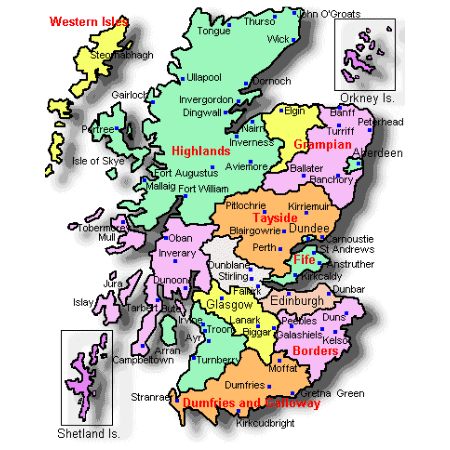
Lochs are everywhere and the north has more mountains than the south.
Glasgow and Edinburgh
Although Glasgow is the largest populated city in Scotland, Edinburgh is the capital. Glasgow’s population is approximately 1,689,000, whereas Edinburgh’s is approximately 548,000 and compared to London’s 9,541,000, these cities are much smaller. How delightful is that?
Changing Weather
When you drive from one district to another, the weather can change. You can experience four seasons in one day. Don’t believe it when people jest about the Scottish weather. You can experience very hot or cold days but mostly it is temperate.
Clothing Overview
Make sure you have the correct clothes (and I say clothes in the plural) to suit the temperature of the day! They say when in Scotland, don’t pay too much attention to the weather forecast, this depends on which district you are visiting or north, south, east or west as each will give you a totally different weather pattern. The highlands are different to the lowlands, with the east contrasting with the west.
| Season | Average Temperatures | Delights |
| Spring | March, April, May – 6°C (42.8°F) to 13 °C (55°F) | Purple and pink to deep blue hyacinths, daffodils, cherry blossoms, rhododendrons and bluebells burst into bloom. New bursts of colour invite the tourist and locals out into the sunshine. Lovely time to visit! |
| Summer | June, July, and August – 15°C (59°F) to 17°C (64.4 °F) | Longer days of daylight. It only gets darker at around 11 pm, although in the north it really never gets totally dark. Great time of the year to pack lots of things you want to do during the day. |
| Autumn | September, October, November – 7°C (45°F) to 14°C (57°F) | The beautiful technicoloured colours of autumn transform the landscape. The air starts to get crisp, but divine time to hike. |
| Winter | December, January, February – maximum average temperature 5°C (41°F) | Can be very cold with winds. On the mountains approximately 100 days, snow covers the tops and lower down, 15 to 20 days it will be snowing. The 5 ski resorts are regarded as the best in Europe. |
Tips on What to Add to your Suitcase when visiting Scotland
Do you think you will need warm clothes? You are right, but pack warmer than you think. Also, think layers! There will be wind and there will be rain and the next minute sunshine! Hmm, what are the best shoes for rain?
- Moisture-wicking scarves – pack at least two. 100% Merino Wool Ski Wool Neck Gaiter. These can be brought up over part of the face to protect you if the wind comes up.
- Long Sleeve Thermal Shirt – pack two in case one is in the wash. MERIWOOL Women’s
- Woollen Socks – you will need a couple of pairs. They normally come in packs of 3. DANISH ENDURANCE Merino Wool Cushioned Hiking Socks. Nothing worse than cold feet. These socks are very comfortable and great for hiking. In Scotland, you will be doing a great deal of walking.
- Soft Wool Beanie – you will be thankful for the warmth on your head. DANISH ENDURANCE Classic Merino Wool Beanie
- Waterproof Jacket that keeps you warm – there are two recommendations here. If you are going in the colder months I recommend the Women’s Mountain Waterproof Ski Jacket. I still prefer something that is longer when strolling around outside, and that is also light to pack into my backpack. The Eddie Bauer Women’s CirrusLite.
- Hiking or Walking Boots that are warm – the Women’s Winter Ankle Snow Hiking Boots which are great for anytime walking and are water resistant. I love the different choice of colours you can choose from. For the warmer months the CAMEL CROWN Hiking Shoes Women Waterproof. We have to consider the puddles of course. Taking some rain boots or to others, gumboots is a good idea. LONDON FOG Womens Piccadilly Rain Boot
- Quick dry pants – personally I feel more comfortable with looser fit pants. The Viodia Women’s Hiking Cargo Pants are very comfortable and waterproof. In the extreme cold, you can wear your long thermal underwear underneath these quite comfortably. They come in different colours so you can buy a few pairs.
Do Not Forget
Don’t forget things like a universal adapter as the power outlets in Scotland are probably not the same as where you come from. Also a waterproof phone case, in this case, could be very useful! My daughter who lives in Ayr, Scotland, often phones me in the rain when my grandkids need to chat.
When there is rain, there are mosquitos! So don’t forget a mosquito wristband, which is also waterproof!
Understanding a wee bit about the Languages spoken in Scotland
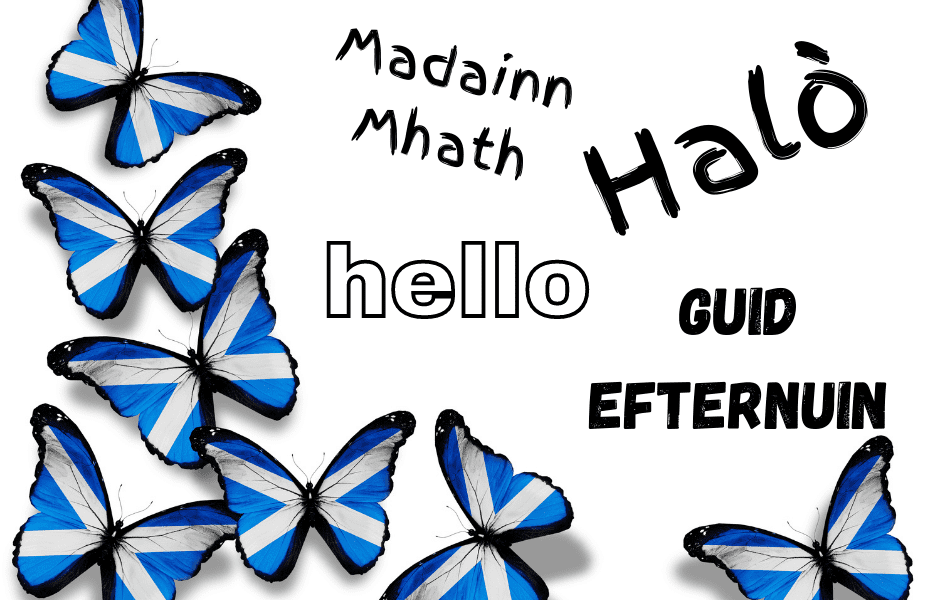
- English – this is spoken throughout Scotland and taught in schools. According to the 2011 census, 98.6% of the inhabitants over the age of three said they could speak English well and the majority of them spoke English at home. Wonderful if you are English and going on vacation, but sometimes the accent is hard to understand in certain areas, so you need to listen carefully.
- Scots – over 1.5 million people said they could speak Scots, but only a small percentage said they spoke Scots at home. The Orkney Islands, Shetland Islands, Moray and Aberdeenshire, were the main population who spoke Scots at home.
- Scottish Gaelic – is being spoken by fewer and fewer people every year, which totals just over approximately 57 000 people in the councils of Eilean Siar (Western Isles), Highland and Argyll and Bute.
Understanding a wee bit of Scottish Jargon and Slang
English is spoken widely in Scotland, yet it is wise to know a little bit of the jargon spoken by the Scottish. This can vary depending on which district you are visiting, but also fun to include in your daily conversations. If you go to Appendix: Glossary of Scottish slang and jargon in Wiktionary you will be able to learn a whole lot more!
- zany – crazy/outstanding
- yuptae – what are you up to?
- yaldi – an expression of great joy
- wheesht – be quiet (haud yer wheesht)
- wabbit – tired (I’m feeling awfy wabbit)
- tatties – potatoes
- steamin – drunk
- rocket – a crazy or annoying person.
- Piece – a sandwich
- oot – out
- naw – no
- messages – shopping
- lavvy – A lavatory (toilet)
- kip – sleep/nap
- hoot – what
- hen – term of endearment for a woman, equivalent to “love” or “darling”
- eejit – idiot
- claes – clothes
- barra – a small child. Also, an affectionate term for a younger person (A wee barra.)
- Ah – I
9 Tips on What Not to do in Scotland
The Scots are an extremely friendly and hospitable nation, but they do get irritated by certain do’s, so avoid these if possible.

1. Don’t Pretend to be Scottish
Don’t pretend to be Scottish if you’re not. Often we have relations to ancestral ties or families that were born in Scotland and even though our history is real, the Scots do not appreciate you talking about how you are linked and all that you know. Listen to what they can tell you and do not irritate them about how much you think you know about their country.
2. Watch your Hand Gestures
Keep your hand gestures to a minimum. Hand gesturing they do not welcome! So if you are from Italy, try and contain yourself. When walking or standing, keep your hands out of your pockets. If your hands are cold, get a warm pair of gloves.
3. Don’t Complain about the Weather
Don’t complain about the weather. Yes, know beforehand that the weather will change about 4 times in one day, but accommodate this by Wearing different layers of clothing that can be peeled off if it gets warmer, or put back on if it gets colder. Umbrellas are not recommended as the wind will sweep them away. Rain is always expected, so wear a jacket appropriate for rain, wind and cold. Make sure it is light but functional. A backpack assists with carrying these extra clothing “peelers”.
4. Speaking with a Scottish Accent
Please do not try and speak with a Scottish accent! You will not do it correctly and in turn, will irritate the Scots in earshot and most certainly spoil their day.
5. Taking Pictures
It is so exciting to view and take pictures and selfies at all the touristy sites but do so courteously. Don’t stand in the middle of the pavements (sidewalks) as the inhabitants need to walk along the pavements often to work or a required destination, therefore do not need you blocking their way.
6. Existance of “Nessie”
You could offend a Scottsman by saying that the “Nessie” Loch (Lake) Ness Monster does not exist, besides it is a Scottish Legend and is believed still by many Scots that it does.
7. Nose Rubbing
Don’t rub the nose of the Skype terrier, Greyfriars Bobby statue, in Edinburgh that was loyal to his owner and who sat waiting for him by his grave for 14 years. Rubbing his nose is supposed to bring “luck”, but this frustrates the locals as it is wearing down the bronze of the statue.
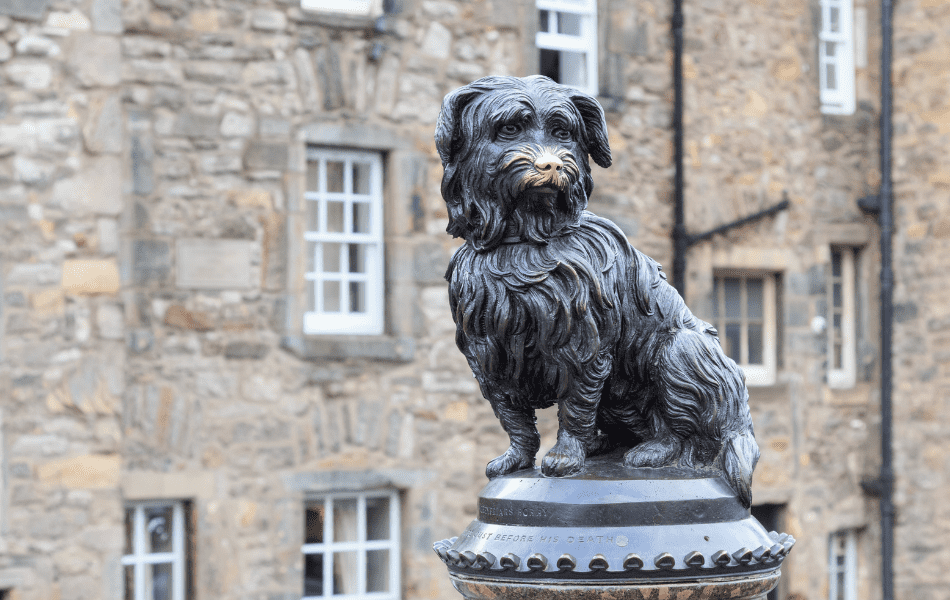
8. Football Discussions
Don’t even try to get into a discussion about football since the local residents are very close-minded about their soccer (oops don’t call it soccer, it is football!). If you do you will get into an argument!
9. Initial Greeting
When you meet someone, shake hands as without a doubt this is the standard expectation when greeting others.
Do the Scottish still belong to Clans?

Even those of us of Scottish descent still talk about what Clan they are associated with for instance I belong to two, the Scott and the Macleod clans, due to my mother’s side and father’s side ancestry. There is a heraldic coat of arms for each clan and this belongs to the clan chief.
Quantity of Clans
There are 125 different clans according to the Standing Council of Scottish Chiefs and today there is less fighting and more uniting. A good understanding of the different clans and their history is in Wikipedia., which allows for an interesting read.
5 Good Reasons Why Men Wore Kilts
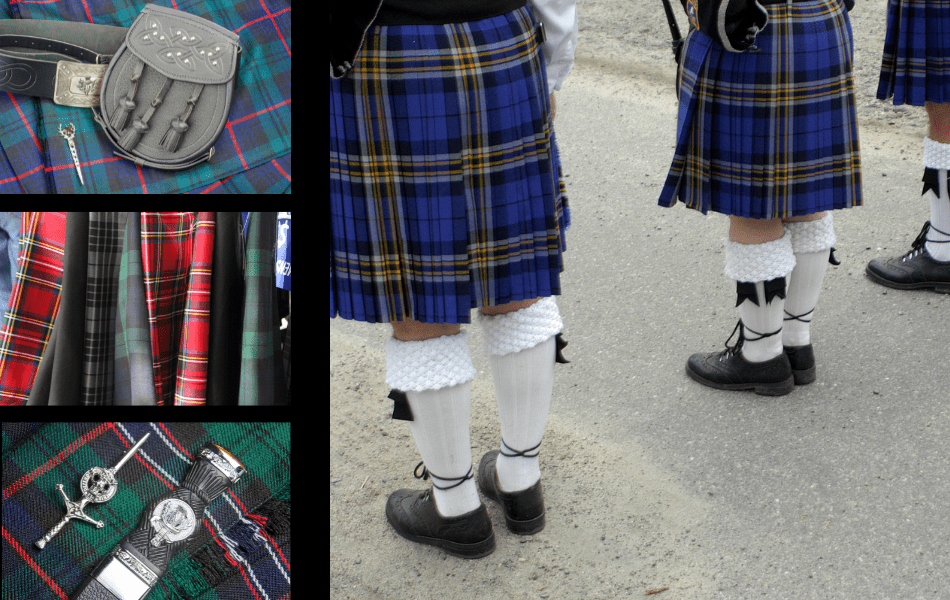
Water Protection
Do you think long trousers were practical for Scottish men with all the rain that occurs in Scotland, and fighting that used to transpire long ago? No, they would have been constantly wet and above all, if they had to wade through marshes or rivers, having a kilt most certainly helped.
Kilts used for Blankets
Kilts also helped to be blankets and were made from woven wool, (today they are made from different patterned materials) so the warmth that they created helped the men while out on the comb (countryside).
Hiding Weapons
What a good place to hide your weapons, under the kilt!
Identity
The pleated tartan kilt is a lasting symbol of Scottish identity therefore different tartans represent different clans.
Titled Tartans
There is even a Scottish Register of Tartans (Code: CTST) which records 1000’s of the titles of the different tartan designs. This is serious business!
A question that is often posed is “What do men wear under their kilts?”
Varying sets of accessories for the kilt
| Sporran (purse in Gaelic) | A type of pouch that hangs from the waist. It is made from doeskin and decorated with metal plating or fur. In the past, it was used to carry ammunition or daily rations. Today, it is used to carry car keys and cell phones. |
| Ghillie shirt | These shirts are loose and very comfortable with leather crisscrossed lacing up the front. |
| Belt | Made from leather with an embossed buckle. |
| Kilt Hose | Hose means socks. They are taller than most socks and turned down at the top. Elasticised straps called Garter Flashes that go under the turned-down section of the hose to keep the sock up. |
| Kilt Pin | The pin is worn on the lower corner of the kilt so that when those Scottish winds come up, the kilt does not blow open. |
| Sgian-dubh | Small sheathed knife that is worn on the top of the kilt hose. Gaelic word means ‘black knife”. |
| Argyll jacket | Worn to both formal and informal occasions. Prince Charlie is a more formal jacket. Both are mainly shown on evening occasions. |
| Ghillie Brogues | “Brogues, from the Gaelic word bróg meaning “shoe,” refers to any low-heeled shoe, loafer, or boot with hole perforations on the leather uppers (top of the shoe), known as broguing, and serrated edges alongside the seam of the shoe.” – Masterclass. The brogue has long laces that wrap around the leg above the ankle and tie below the calf. While walking through the bogs of Scotland the design allows them to dry quickly and drain. |
7 Delightful Animals of Scotland
I am a lover of different animals that are native to the country I am visiting however Scotland has its own selection that gives you a feeling of awe. I have only mentioned a few.
1. The Unicorn

This is Scotland’s National Animal moreover, every national animal represents the spirit of that country, as I have noted, a country of lore and fables. Although the unicorn is totally fictional, one does like to secretly believe it once existed.
My granddaughter of 5, if asked will tell you that it does exist, due to the fact that it is mentioned 8 times in the Bible. I will leave this up to you to come to your own conclusion.
“His glory is like the firstling of his bullock, and his horns are like the horns of unicorns: with them, he shall push the people together to the ends of the earth: and they are the ten thousands of Ephraim, and they are the thousands of Manasseh.” – Deuteronomy 33:17
2. Heilan coos (Highland Cows)
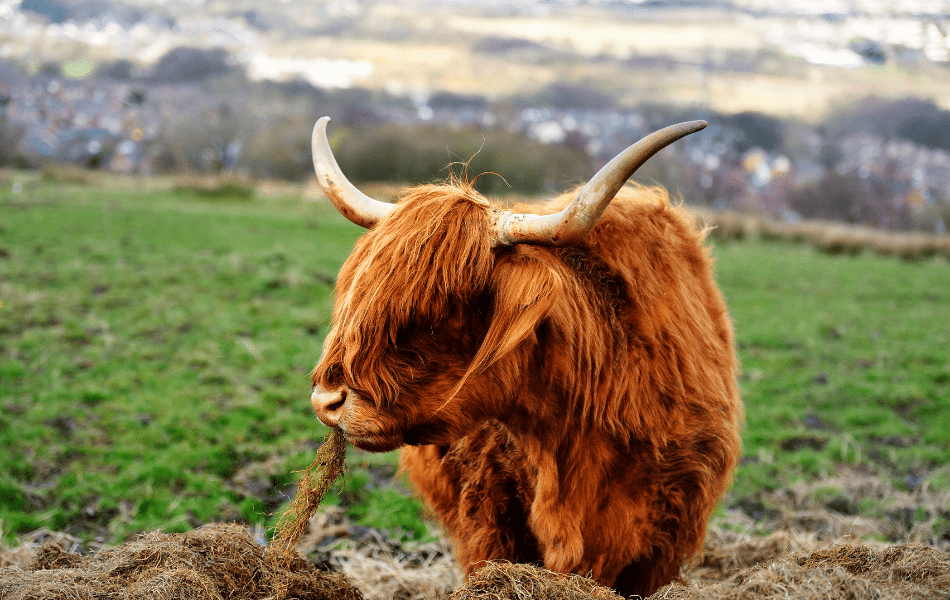
Just look at it! How can you not fall in love with this fluffy, cuddly coo, whereas, it is smaller and lighter than other breeds?
- they are one of the purest breeds in the world as they have not changed in over 200 years
- born athletes and extremely intelligent. They can run as fast as 40 km per hour and jump over a fence
- placid and never show aggression even in their own herds. Perfect for cuddling!
- the dossan (hair) on their forehead covers their eyes
- in snowy winters their horns assist them to forage for food digging deep into the snow to get to the grass
- baby is called a calf, the mother a Dam and the father, Sire. So noble!
- perfect for conservation grazing and landscaping, creating browse lines in the trees and they are light-footed so do not trample the bracken flat, allowing the flowers to bloom where they have trodden. Eating only by pulling the grass, without destroying the roots.
3. Mysterious Wild Cat
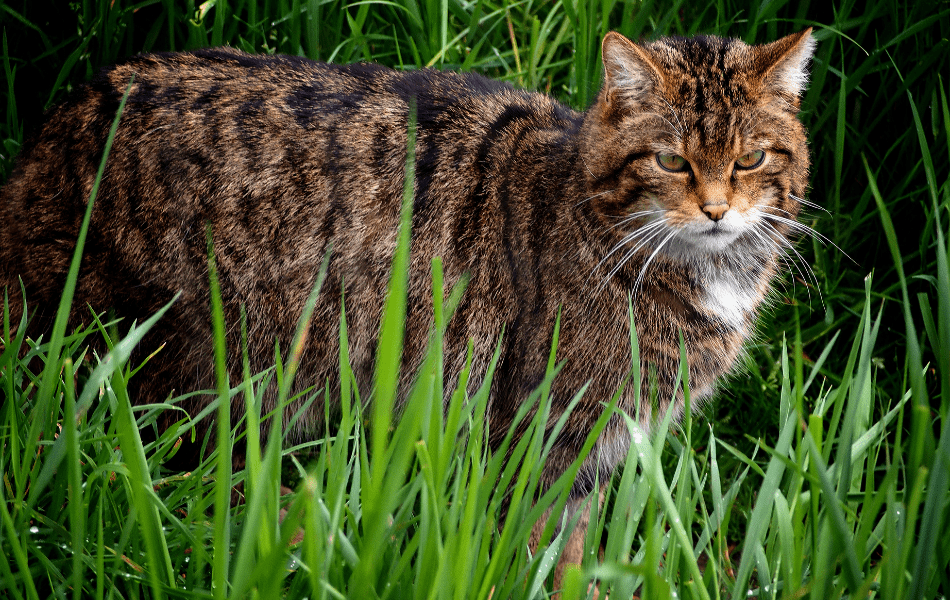
Generally, the Scottish Wild Cat is larger than a domestic cat and these indefinable carnivores are the only wild cat found in Europe and are a European protected species. They avoid intensively farmed lowlands, high mountain areas and visible, uncovered coasts, preferring the edges of woodlands, moorlands and mountains.
4. Scottish Red Deer
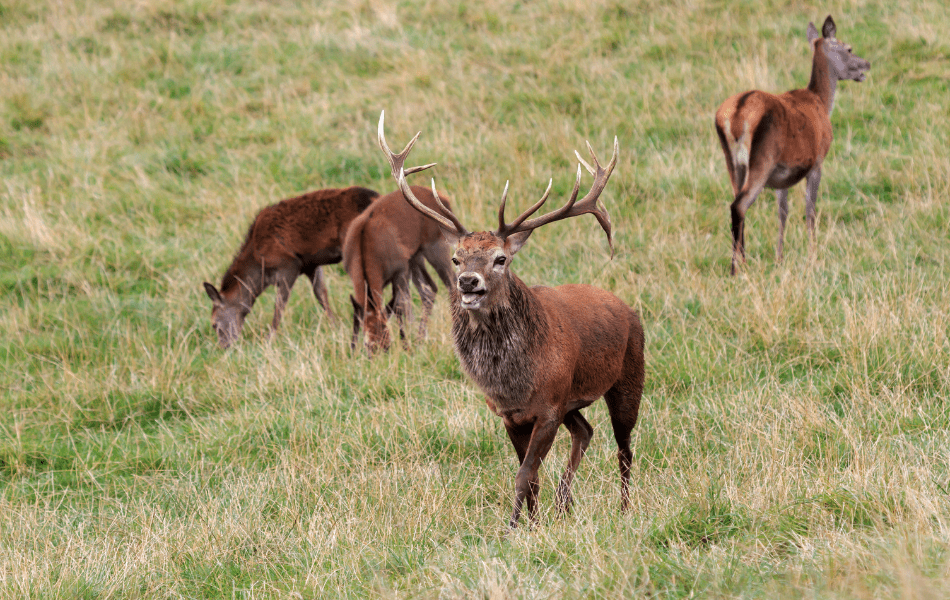
The Scottish Red Deer has branching large antlers, which increase in size as they get older equally are a subspecies of the red deer which are native to Great Britain. The numbers have doubled over the last 50 years and often culling is necessary. Such beautiful magnificent creatures! I can not imagine shooting one other than with a camera.
Habitat
They can be seen in deer parks, national parks, mountainsides, and grasslands on the side of mountains and moorlands. Those striking, gentle eyes melt your heart as you gaze into them.
5. Pine Marten – Martes martes
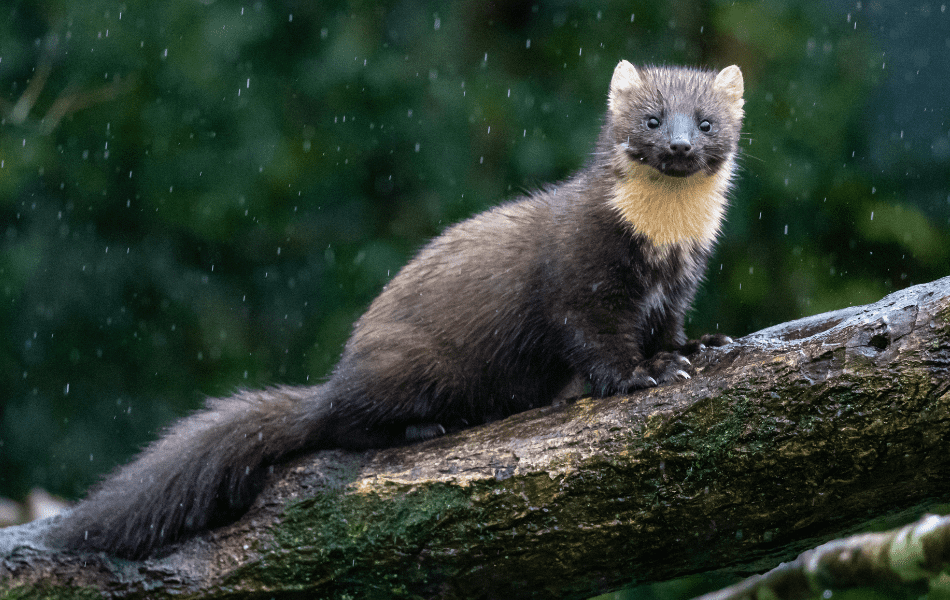
Protected by the Wildlife and Countryside Act (1981), the Prime Marten is not allowed to be trapped, disturbed or sold.
Habitat
Comparative size is that of a cat and a member of the weasel family, although shy, they prefer well-wooded areas and are currently virtually extinct. You can find them in the south, but mainly in the Grampians and Scottish Highlands.
Dens
They are astonishing climbers so adapted to wooded areas with older trees, where their dens are in hollow trees to protect themselves from predators. Their babies are born without hair and blind and only after 6 weeks do they emerge from their dens.
Diet
Eating from fruit trees and a variety of shrubs, they also eat small animals. Did you know their droppings are blue however if you happen to spot one, pat yourself on the back? They are a rare sight!
6. Minke Whales – nicknamed Kasey and Knobble
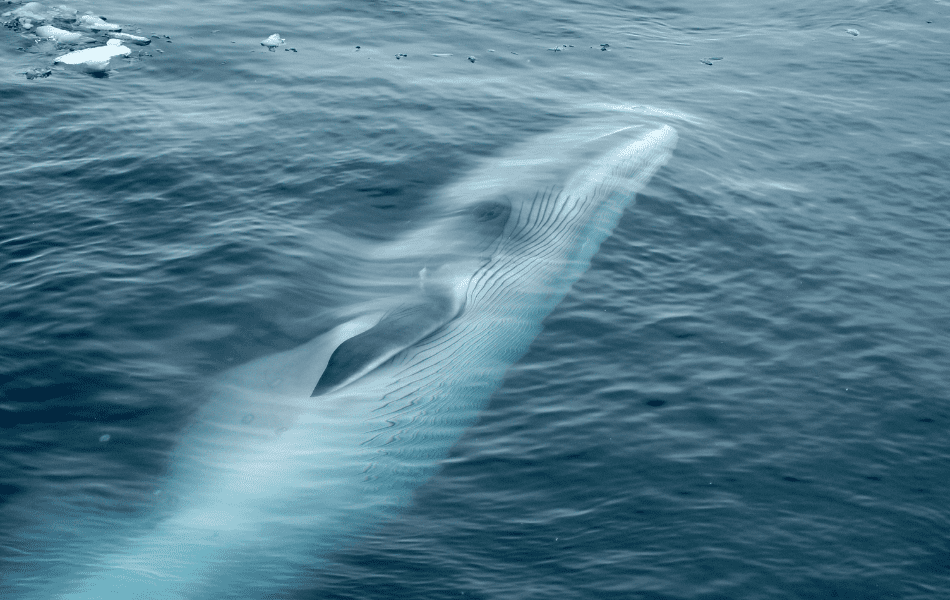
Over the last 20 years, these two Minke whales, Knobble and Kasey, have repeatedly been identified off the west coast of Scotland. Knobble has been seen more than 50 times, mostly around the Isle of Mull, since 2002, yet Kasey has been seen more than 30 times.
7. National Bird of Scotland – the Golden Eagle
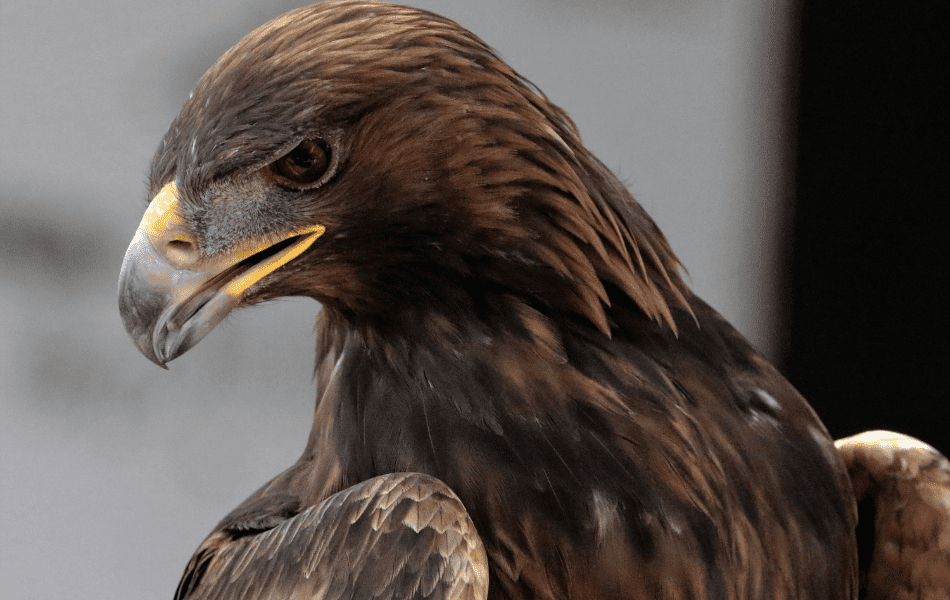
The golden eagle represents strength and pride, which the Scottish most certainly are. There are over 400 pairs of golden eagles mainly in upland forests, being Argyll, Galloway, and Glenmore Forest Parks, on Mull and Skye, and in Glen Affric. If you are a birder, one of your aims will be to see this magnificent creature, taking note of its wingspan which is the size of a door.
Most Popular Cities or Towns to visit in Scotland
So many wonderful mysterious, imaginary, historic cities and towns in Scotland to mention, but due to length I have only mentioned bit a few.
Ayr on the southwestern part of Scotland
‘Tis not the surging billow’s roar,
‘Tis not that fatal, deadly shore;
Tho’ death in ev’ry shape appear,
The wretched have no more to fear:
But round my heart the ties are bound,
That heart transpierc’d with many a wound;
These bleed afresh, those ties I tear,
To leave the bonie banks of Ayr. – middle verse of Ayr Poem by Robert Burns
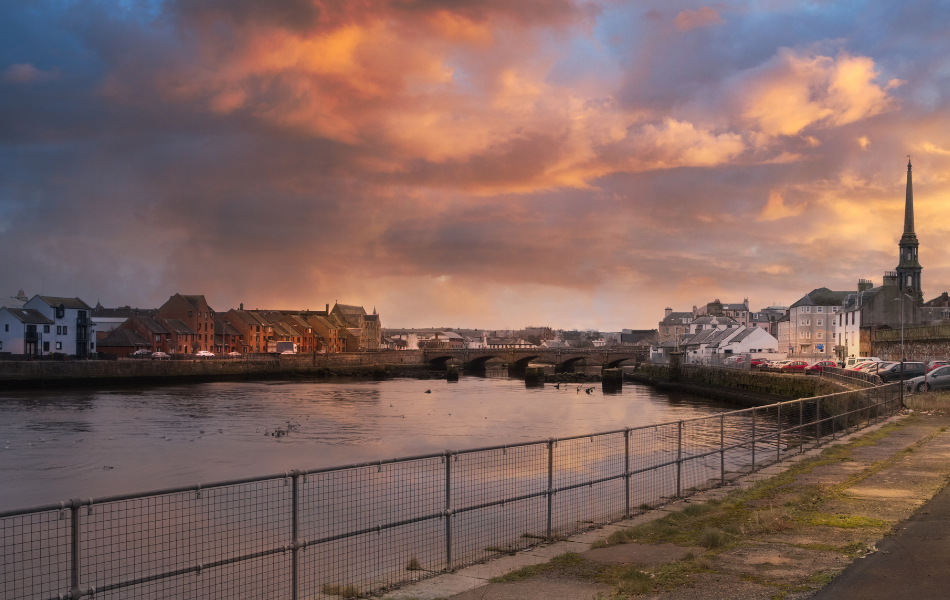
Ayr is one of my favourite towns, but I am also biased as my daughter, son-in-law and grandkids currently live there and with pride, they say that Ayr is the most visited town in Scotland.
Ayr Beach is known as one of the best beaches in Scotland and it has been awarded a Seaside Award from Keep Scotland Beautiful, boasting long stretches of sand that allow one to go for those beautiful hikes alongside the water’s edge.
Tours
Take a tour and visit the Robert Burns Birthplace Museum where Robert Burns was born in 1759. Also, the Culzean Castle is a sight to behold then incorporate a Whiskey tour and visit the wooded areas at Roselle Park, where you will see tons of squirrels to feed and watch.
Meet the Glaswegians from Glasgow
“As the plane lands in Glasgow airport, passengers are reminded to set their watch back 25 years.” Frankie Boyle

Known as one of the friendliest cities in the world! Full of charm and character, a city of art, architecture, music and history. It is only 45 minutes away from Edinburgh by train. Both cities contrast each other in different ways.
Shopping and Restaurants
Wonderful shopping and a marvelous assortment of restaurants, furthermore, visit St. Enoch Centre, Silverburn, and Glasgow’s renowned main pedestrianized shopping area, Buchanan Street.
Have a squizz at Restaurants in Glasgow by Tripadvisor, exposing recommendations and variation. Make sure you have lunch at Bread Meats Bread (they also serve vegetarian). Pay a visit to the West End which brags beauty, and architecture, and in the alleyways, superb restaurants and bars.
Art Galleries, Museums, and Parks
You just have to visit Kelvingrove Art Gallery and Museum. Architecture that will leave you breathless and three floors to view, with such difference. Once you have finished your excursion in the museum, go relax in Kelvingrove Park then experience an animal hunt, where you will see red foxes and maybe even otters.
Perfect for Kids
If you have your grandkids on vacation with you, visit Glasgow Science Centre. Explore a world of technology and science. Oh me gosh, this is astonishing!
Unique Sights
Different things to see in Glasgow that normal tourists won’t see. The Glasgow Necropolis, Hidden Lane Saturday, Sharmanka Kinetic Theatre, and the City Mural Trail.
Edinburgh’s Must-Sees
“Edinburgh isn’t so much a city, more a way of life… I doubt I’ll ever tire of exploring Edinburgh, on foot or in print.” – Ian Rankin
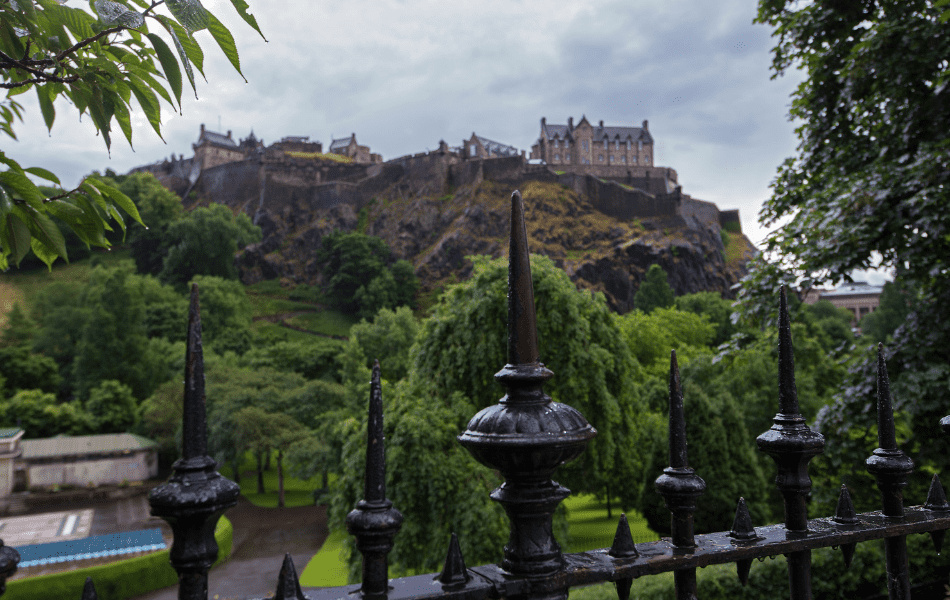
What is most appealing about Edinburgh, is the amazing epic views from 3 different spots, among others.
When in Scotland you need your hiking boots and a love of exploring to discover all the awe-inspiring secret spots.
- Princes Street Gardens – Princes Street Gardens of 37 acres was created by draining Edinburgh’s largest loch, the Nor Loch. An artificial hill called the Mound separates the New Town from the Old Town. Beautiful all year round. Monuments are everywhere, but my favorite is the beer and smoking bear, Wojtek. I love fascinating stories and this one tops them all. If you happen to be visiting at Christmas time, the Christmas market and ice rink are a wonderful Christmas celebration. Breathtaking views!
- Arthur’s Seat – Arthur’s Seat is the highest point of an extinct volcano that erupted 350 million years ago and is situated at the end of the Royal Mile in Holyrood Park. There are a couple of different trails you can take to get to the summit, some easier than others. 360-degree breathtaking views of the city and you can see a mile away, another extinct volcano, Edinburgh Castle.
- Edinburgh Castle – climb to the top and this allows you another stunning, picturesque spectacle.
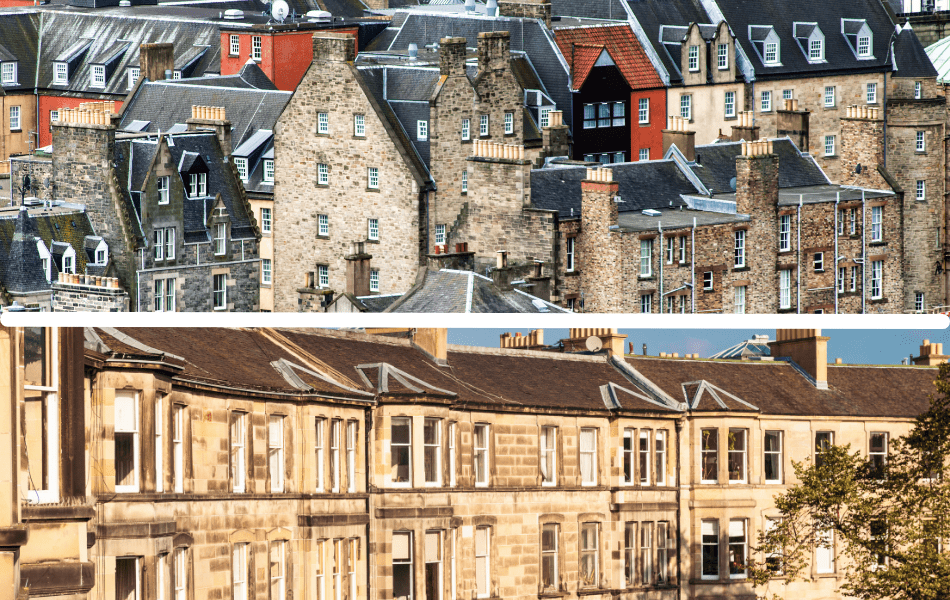
In 1995, the Old Town was listed as a UNESCO Heritage Site. Go on the Royal Mile which runs between two historic features in the Old Town; the Holyrood Palace and Edinburgh Castle measured as exactly 1 mile between the two.
Take in the souvenir shops and savor the cuisine of a choice of diverse restaurants while you walk the mile. Of course, Edinburgh Castle is a magnetism for tourists worldwide, so plan a whole day to experience this historic mile.
Walk where kings, queens, and soldiers have once trodden.

Tours with Ghosts
Edinburgh Underground Vaults Tour and Ghost Tour are so unique. A creepy tour under the Old Town. From stories of witches, murders, and ghosts! Go with a guide to get the tale!
Exhibit
Camera Obscura is fascinating! Take in five floors of hands-on, interactive exhibits. Allow yourself at least 2 hours for this experience.
Love to Chase Waterfalls

Chasing Waterfalls is part of my must itinerary in any country. As I said in Why you Should Chase Waterfalls, The journey to a waterfall, can be exhilarating, but the destination is mind-blowing and rewarding. Falling water represents life, reinforces faith and spiritual awareness, and existence. It is not the relevance of how big, small, high or powerful that waterfall may be, it is the relevance of that moment.
Take Note
In The Herald, Scotland’s coolest: 12 must-see waterfalls is a lovely read, giving you a bit about each waterfall you should venture out to see.
7 Scotland’s Castles: fairytales and Facts
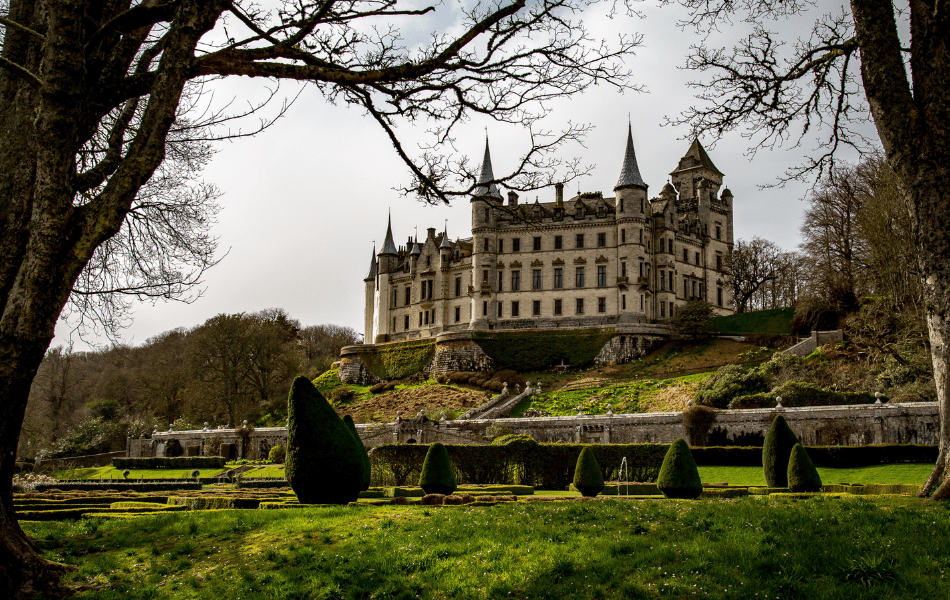
If you ask the Scottish how many castles there are in Scotland, you will get different answers. Some say 1000, some propose 1500 and others even 3000, but the actual quantity is not really important, the relevance is that when you go to Scotland, you will see castles.
Occupied Castles
Many are still occupied today, some in ruins, and some you can even stay in. I have listed 7 below and try you can call on at least 4 of them. The encounter will stay in your imagination forever! I have not mentioned Edinburgh Castle as I have divulged this under the City of Edinburgh.
Did you know that Macbeth was the only play Shakespeare ever set in Scotland?
| BALMORAL CASTLE | Did you see the movie “The Crown” on Netflix? In Royal Deeside, Aberdeenshire, Scotland, owned by Queen Elizabeth II. Each year the queen and her late husband Prince Phillip spent the summers and early autumn here. It is wise to make bookings prior to visiting. A Luxury Landrover Expedition Tour is fabulous to go on if your pocket allows it. |
| CAWDOR CASTLE | During the winter it is used by Lady Cawdor as her home, open to the public in April. Inhabited by the Cawdor family for over 600 years. The castle in itself is mind-blowing, but the 3 different gardens, Castle Gardens, Auchindoune Gardens and Friends of Cawdor Gardens, each with their own history, will enthral you to return. |
| DALHOUSIE CASTLE | If you want to stay in a castle, Dalhousie is the perfect hotel to combine history and luxury. It is only a 20-minute drive from Edinburgh. |
| DUNROBIN CASTLE | Fairytales forever, Dunrobin Castle is a picture to behold. Historic home to Dukes of Sutherland and Earls. It is the largest in the Northern Highlands. 189 rooms. It is open annually from 1 April to the end of October. The tour will take 2 – 3 hours. |
| GLAMIS CASTLE | Childhood home to the late Queen’s mother and where Princess Margaret was born, this Glamis castle is saturated in history. William Shakespeare’s inspiration for Macbeth and the home of the Earl of Strathmore and Kinghorne. Magnificent red stonewall creation. Stories of ghosts, monsters and secret rooms continue into current times. A guide will reveal the stories. A truly charming, picturesque estate. |
| INVERARAY CASTLE | Inveraray is known as one of the best castles to visit in Scotland. On the banks of Loch Fyne only 38 miles from Oban. Certain scenes from Downton Abbey were filmed at the castle. It is the family home of the Clan Campbell and you will discover the rich generations of history of this family. |
| CASTLE FRASER | Yes, we know the name from one of our favourite TV shows Outlander with Jamie Fraser played by Sam Heughan. Other characters are depicted in the show such as Simon Fraser, and The Fox. Castle Fraser has one of the tallest tower houses. Built as the home of the Frasers of Muchalls, later Frasers of Castle Fraser and then occupied eventually by the Mackenzie family who took the name, Mackenzie Fraser. |
Inhabited Islands You Must Visit in Scotland
Did you know there are over 900 offshore islands in Scotland, classified into four main groups, Orkney, Shetland, and the Inner Hebrides and the Outer Hebrides? To understand where they are based, you need to understand what are the Inner Hebrides and Outer Hebrides.
“The Hebrides are a group of islands extending in an arc of the Atlantic (west) coast of Scotland. They are subdivided into two groups—the Inner Hebrides to the east and the Outer Hebrides to the west—which are separated from each other by channels called the Minch and the Little Minch.” – Britannica
Shetland Islands
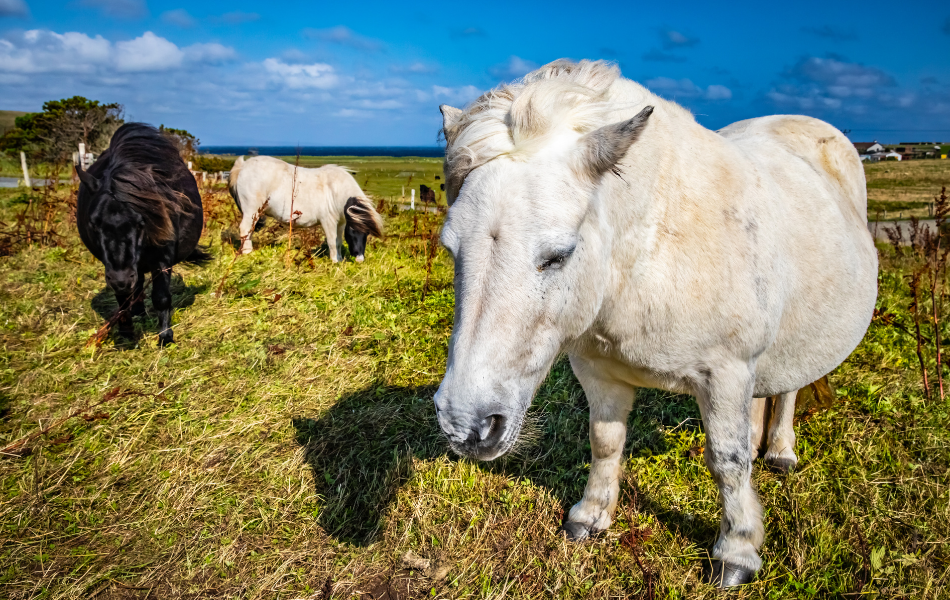
The Shetland Islands are UK’s most northerly point, surprisingly on June 21, the longest day of the year where the sun rises at 3:38 am and sets at 10:34 pm, whereas the nights in summer do not really get very dark.
About the Islands
Can you believe that 100 islands make up these islands, with the largest of them being Scalloway, which is now mainly a fishing port with less than 1000 inhabitants? Lerwick is the capital and has a population of around 7500, representing the only burgh of the islands. Yell is a birders’ paradise and you will find birds such as the Cackling Goose, Blue-winged Teal, Surf Scoter and so many more! Have a look at the Yell Bird Checklist.
Beaches
Everyone who visits the Shetland Islands seems to have a much-loved beach. Beaches to me define my soul and are a constant psychologist, leaving me peaceful and renewed. A copious amount is found on these islands, therefore Shetland’s best beaches: by the locals relay a wonderful personal aspect on which beaches you should discover.
Shetland Ponies
Shetland ponies, about 102 cm tall, (never measured in hands) are found all over the islands and for that reason, they run wild and are very hardy, even on the beaches. Although wild and free they are mostly owned and marked with the owner’s signature.
Isle of Skye
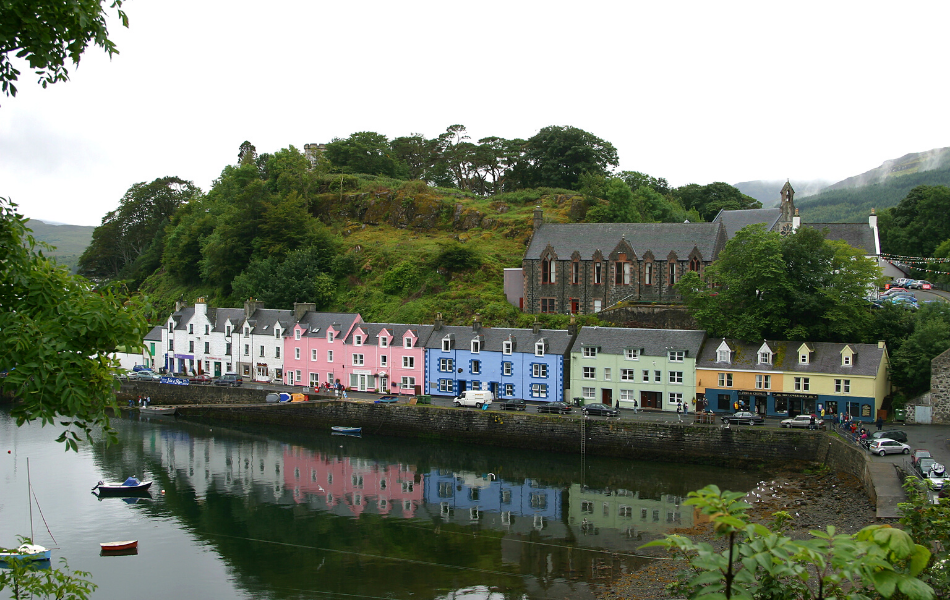
Popular to both movie-makers and tourists, Skye brings in its guests to venture around the island. Getting around the island you do need to walk, so I recommend you get into hiking, before arriving. Read my Hiking for Beginner Tips before visiting Scotland and get going so you can get the most of what Scotland and Skye have to offer.
Movies Filmed on Island
Famous movies and Netflix series such as King Arthur, Transformers, The Last Knight, Legend of the Sword, Outlaw King, and the BFG, to name a few, were filmed on this island.
What to Visit
Visit Dunvegan Castle.
At Neist Point where you find an abandoned lighthouse and the sunsets are glorious and magnificent, being the perfect spot to watch whales and dolphins.
Fairy Pools which Skye is famous for are everywhere, with water that is so pure, crystal clear, and clean.
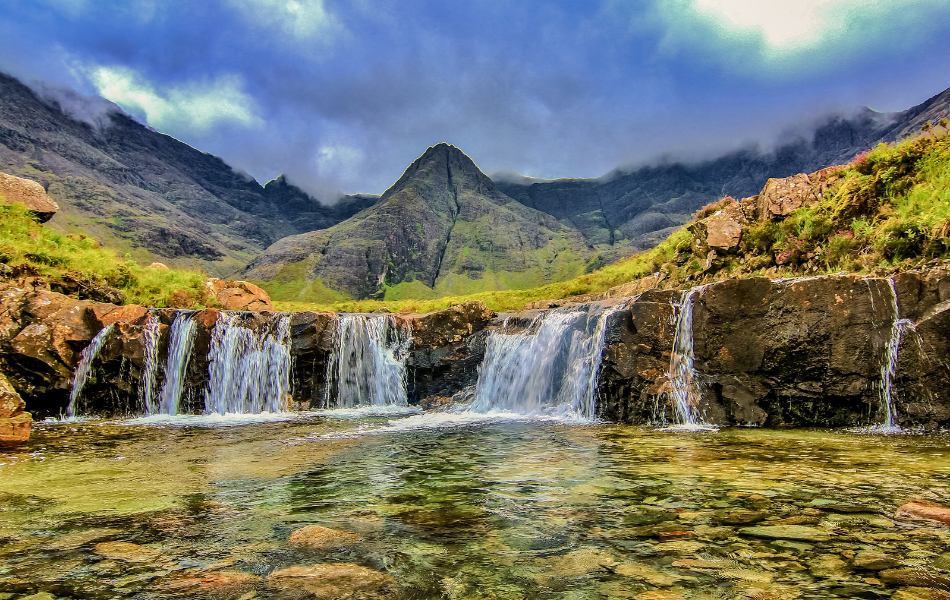
Capital
Portree Town (Port on the Slope in Gaelic) is the capital, specifically view the gift shops, galleries and true Scottish pubs with traditional music and book yourself in at one of the quaint hotels. In addition, browse through the different tours.
Lewis and Harris Islands
On the Outer Hebrides, Lewis and Harris Islands are the largest, which are two islands joined together continuously, not forgetting to mention the beaches which are striking and scenic. The most popular is Luskintyre on Harris with the longest stretches of sand, equally Reef Beach – Traigh na Berie on the Isle of Lewis.
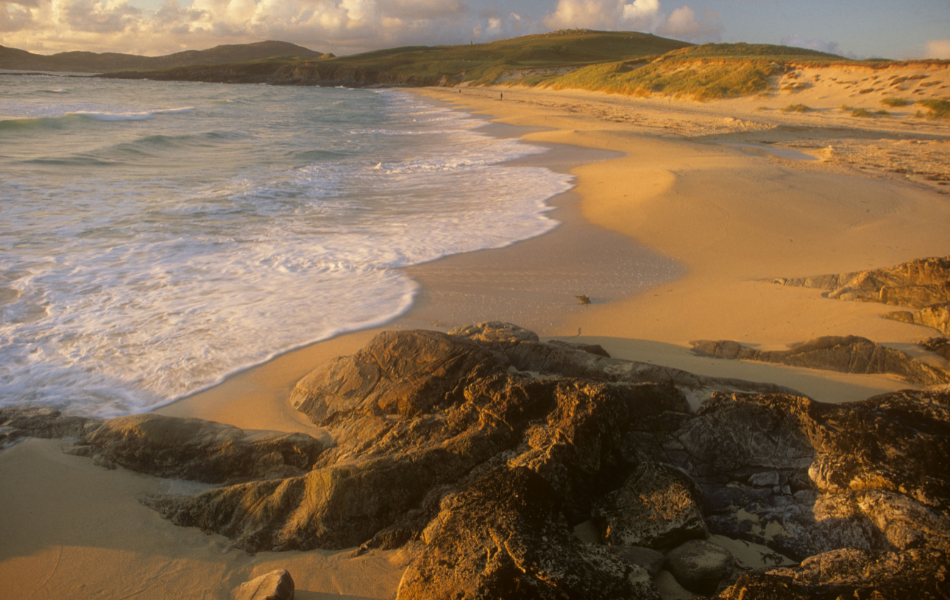
Comparisons Between the Two
Lochs, coastal inlets, and machair plains! Harris is more mountainous than Lewis, balanced against Lewis which is mostly peaty moorlands therein is a population of over 21 000 and the main town is Stornoway where the grub should be savored, and fish and chips devoured at the sheltered harbor.
Prior to visiting Scotland, listen to the Scottish rock band called Runrig. They were established in 1973 and are one of the best bands I have ever listened to.
Have you any desire to go to Scotland? Share your comments and desires. If you have already been, share in the comments section, your best experiences.
Recent Posts
Discover insider tips to find cheap flights from the UK, save on easyJet, Ryanair & BA, and score the best weekend and last-minute deals. Why You’re Paying Too Much for Flights Most UK...
Discover the sounds of travel, from laughing kookaburras to market chatter, church bells to ocean waves - a journey heard as much as seen. It always starts with a sound. The other day, walking...

